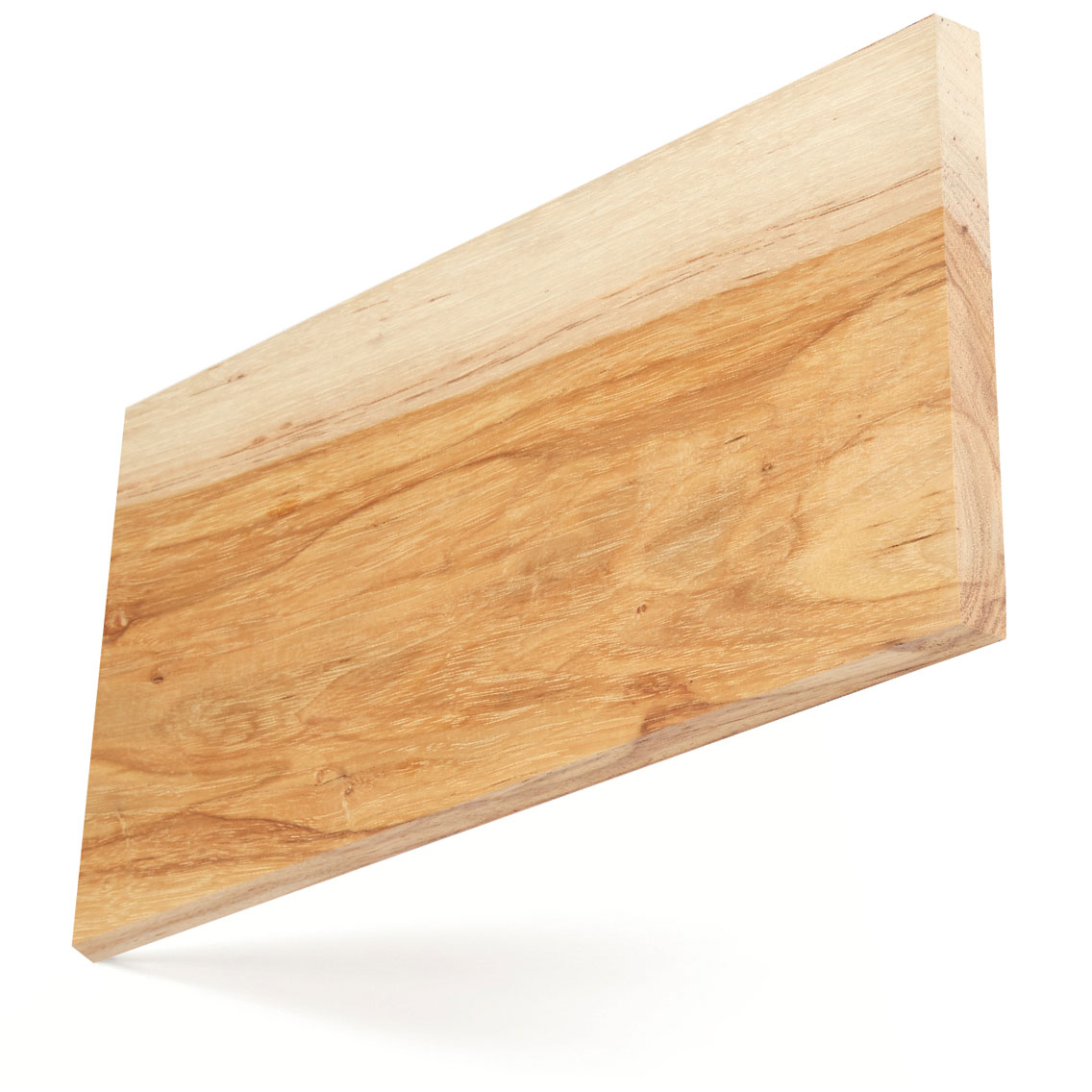American pecan
American pecan and hickory are different species of a very diverse group, but in the round (log) they are virtually indistinguishable from each other and therefore often processed by saw mills and sold mixed together.
Latin Name
Carya spp.
Other Common Names
May be referred to as pecan hickory

Forest Distribution
Pecan trees grow naturally in the south eastern USA and principally in the Mississippi valley. It is an important fruit-bearing tree and varies in size enormously.
FOREST GROWTH
FIA data shows U.S. pecan growing stock is 46.8 million m3, 0.3% of total U.S. hardwood growing stock. American pecan is growing 931,000 m3 per year while the harvest is 355,000 m3 per year. The net volume (after harvest) is increasing 576,000 m3 each year. U.S. pecan growth considerably exceeds harvest in the four main producing states of Arkansas, Kansas, Louisiana, and Mississippi.
LCA Tool
seconds
Material Availability
Pecan sawn lumber is available in export grades, but sold unselected for colour and mixed. The NHLA FAS grade permits a minimum width of 4 inches (101.6mm). The lower NHLA grades (1 & 2 Common) can produce an attractive and fashionable rustic look. Lumber is mainly produced in thinner stock (4/4” & 5/4) although a limited amount of thicker material may be available.
Wood Description
The wood of pecan varies greatly in colour, grain pattern and appearance from this very diverse group. It is coarsely textured and the grain is usually straight but can be wavy or irregular. The sapwood is white and maybe tinged with brown, while the heartwood is pale to yellow brown to dark in colour. Deep purple mineral streaks are a natural characteristic. Bird pecks are also a common characteristic and neither is considered a defect.
Mechanical Properties
The wood of pecan is usually considered very strong with excellent stem bending classification, high crushing strength, high stiffness and very high shock resistance.
-
0.66
Specific Gravity (12% M.C.)
737 kg/m3
Average Weight (12% M.C.)
N/A
Average Volume Shrinkage (Green to 6% M.C.)
94.462 MPa
Modulus of Rupture
11,928 MPa
Modulus of Elasticity
54.126 MPa
Compressive strength (parallel to grain)
8,095 N
Hardness
Oiled / Un-Oiled Appearance


Performance
- Pecan is considered to have good machining properties resembling those of hickory but difficult to glue, and is very hard to work with hand tools. It holds nails and screws well but tend to split, so pre-boring is advised. The wood can be sanded, stained and polished to a good finish. It can be readily dried but has fairly high shrinkage.
- The wood is non-resistant to heartwood decay and classed as moderately resistant to preservative treatment.
Main Uses
Furniture, cabinetry, ladder rungs, tool handles dowels and sporting goods. Particularly hockey sticks due to its flexibility.